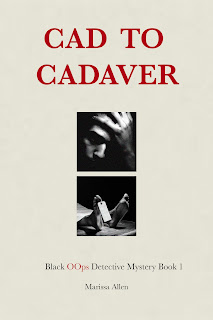"I have, indeed, no abhorrence of danger, except in its absolute effect--in terror." Edgar Allan Poe
Call me sick, call me twisted, but I seem to have a morbid curiosity regarding true crime. I'm fascinated by what drives people to do such things. And a great way to develop fictional bad guys is by reading factual criminal accounts and watching televised reenactments.
And this provides a place for me to do a little shameless self-promotion. My new Black OOps Mystery series is now available. Please checkout books one and two, Cad to Cadaver and Growler to Grave.
Now back to business.
A tragic local story was in the news several years ago that involved a 17-year-old young man who strangled his 10-year-old brother.
During the courtroom proceedings the prosecution, as well as the public, displayed outrage because the young man showed no remorse, and never apologized for what he'd done. In response, he did make an apology. But the statement was chilling to hear as the young man read it with the same emotion he'd use to read a book report.
Although the youth never mentioned his sibling by name, he did say he was sorry for the murder and that he'd never forget how much his little brother meant to him and everyone else. (Really???) Another unsettling aspect of this apology was that he spoke of how he planned to spend his time in prison (receiving his GED, taking college courses and working toward a degree), and when released, he'd go back to work at the restaurant he'd previously been employed by before the murder. (Really???)
The prosecution didn't buy the apology, and neither did the public. The young man received life without parole, because he was only 17 when the murder was committed. What I learned after the trial was that the young man said he did it because he wanted to see what it would feel like to kill someone. He also mentioned that he'd fantasized about committing murder since age 13. I was flabbergasted upon hearing this!
When I brought the case up to my husband, he said, "I don't want to talk about it, I can't even think about it! How can you?"
Perhaps I'm just sick and twisted. But this case reminds me of another one; that of Leopold and Loeb. I first became acquainted with this infamous case when I was 16, working at the library during summer break. One of the reference books kept in the work room was called
The Encyclopedia of Murder. I tried to get to work early everyday so I could read it. (Okay, pretty twisted, I know.)
Maybe this is when I realized I had a morbid curiosity about true crime. I'm not interested in horror movies, and scary books (sorry Stephen King) frighten me too much! True crime, however, fascinates me.
If you're not familiar with Leopold and Loeb, I've provided a thumbnail summary below. But to learn more, click
here.
Nathan Leopold and Richard Loeb were two wealthy University of Chicago college students who murdered 14-year-old Bobby Franks in 1924. They were eventually sentenced to life in prison, and this case has inspired works of fiction, film and theater including
Rope, a play by Patrick Hamilton, and a film of the same name by Alfred Hitchcock.
Both men were exceptionally intelligent. Leopold was 19, and Loeb 18 at the time of the murder, and they believed themselves to be Nietzchean supermen, capable of committing the perfect crime. "A superman," Leopold had written, "is on account of certain superior qualities inherent in him, exempted from the ordinary laws which govern men. He is not liable for anything he may do."
The duo (residents of Kenwood, a wealthy Jewish suburb of Chicago at the time) spent seven months planning an elaborate kidnap and murder scheme of a neighbor, and distant relative of Loeb's. They even planned on a way of receiving ransom money without getting caught. Money wasn't something they needed, as their families were wealthy and provided them plenty.
The boy was kidnapped, murdered and his body disposed of. But when the corpse was discovered, also found at the scene was a pair of eyeglasses. Expensive ones, with a unique hinge mechanism, only purchased by three people in the Chicago area, one of whom was Nathan Leopold. So much for the perfect crime!
Clarence Darrow was hired by Loeb's family and the trial soon became known as "The Trial of the Century." It was later revealed that the men were driven by the "thrill of the kill," as well as to prove that they could commit the perfect crime.
Is it just me, or do you have a morbid curiosity, too?
Thanks for visiting and have a great week!






.jpg)
.jpg)














.jpg)




